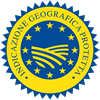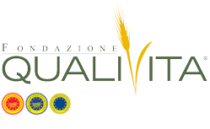Description
The Trote del Trentino PGI indicates salmonid fish belonging to the rainbow trout species Oncorhynchus mykiss Walb., bred in tanks fed with water from sources within the specified production area.
Production Area
The production area of Trote del Trentino PGI is within the entire territory of the autonomous Province of Trento, as well as in the Municipality of Bagolino in the Province of Brescia, in the Lombardy region.
Production Method
The growth phases of Trote del Trentino PGI, which include the sac-fry, juvenile and adult trout stages, and the slaughter process must take place within the production area. The breeding tanks for juveniles and adults must be arranged in a series or in succession, in such a way as to promote as much reoxygenation as possible. The tanks must also be as follows: made entirely of concrete or earth and concrete, or with concrete embankments and an earth, fiberglass, steel or ceramic bottom. The water in the breeding tanks must come from springs and/or wells and/or rivers and streams in the production area. Feed rations must meet the requirements established by tradition. The fish feed used must not contain GMOs and must have the appropriate certification, in line with current regulations. The salmon-pink colour must be obtained using mainly the carotenoid pigment astaxanthin and/or carotenoids of natural origin. The trout are gutted, filleted or sliced, depending on the product type.
Appearance and Flavour
Trote del Trentino PGI have a greenish back with a pink stripe on both sides, a whitish belly and black speckling on the body and dorsal and tail fins. The meat is white or salmon-pink, firm, tender, and lean, with a delicate fishy taste and a light fragrant smell of fresh water, completely devoid of the muddy aftertaste that the meat of farmed trout often has.
History
There are numerous historical references documenting how the Province of Trento is traditionally suited to the production of salmonid fish, deriving both from fishing and tank breeding. In 1879, the Torbole Artificial farm was built, to spread the practice of fish farming in Trentino and to repopulate public water courses with trout and char. Farming in water has been regulated by the Trentino Fishing Charter since 1983, the first in Italy, and it was the reference point for fishing charters subsequently created in other provinces. It is a complex work of environmental reconnaissance, in which each watercourse and lake is contextualised from a chemical-physical, biological and ichthyological point of view.
Gastronomy
Trote del Trentino PGI are released for consumption fresh, therefore they are highly perishable. The product must be kept in the refrigerator and it is best to eat it as soon as possible, in order to best appreciate its organoleptic qualities, and in any case within two to three days. This type of fish is delicious pan-fried with aromatic herbs, roasted with almond flakes, and cooked in paper foil with cherry tomatoes and rosemary. Today it can also be enjoyed minced in the form of a hamburger. It can be used as a filling for fresh pasta or to make a light pasta sauce.
Marketing
The product is marketed as Trote del Trentino PGI. It is sold fresh or in polystyrene trays wrapped in film and/or in polystyrene boxes wrapped in film and/or in packets, packaged under vacuum and/or in a modified atmosphere. It can be sold as a fresh whole product, gutted, with a minimum pre-slaughtered weight of 200 g, or filleted with a minimum weight of 90 g.
Distinctive Features
Trote del Trentino PGI are characterized by a defined fat content (not exceeding 6%) and condition factor, which must not exceed 1.25 for fish weighing up to 500 g or 1.35 for fish weighing over 500 g.












